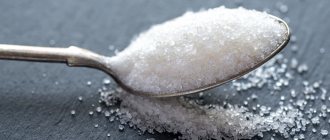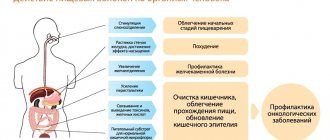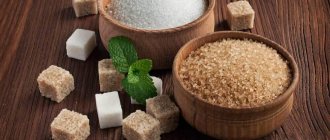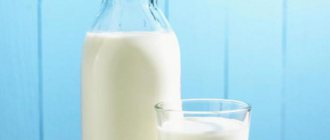Bad habit
But if sugar does not bring any benefit to the body, then why are many of us constantly craving sweets? The thing is that sugar is addictive. Moreover, an unhealthy addiction to sweets develops 8 times faster than addiction to cocaine.
When we consume foods containing a lot of sugar, the nerve cells of the taste apparatus, perceiving sweetness, give a signal to the production of opioids, including endorphins - chemical compounds produced in the brain that bring pleasure. In addition, these substances temporarily reduce pain and stress. The experience of such pleasant sensations sometimes leads to the fact that a person begins to experience an irresistible craving for sweets.
And food manufacturers know very well that sweets are addictive, so they add sugar to almost any food that undergoes industrial processing - dairy products, muesli, sauces, confectionery, juices, etc. At a nutrition conference held in San Francisco in 2015, it was stated that today more than 60 thousand different foods are industrially processed and 80% of them have added sugar.
Click to enlarge
Sugar is not just sucrose. Harmful excess leading to obesity
Recent studies show that the average adult consumes about 22-27 teaspoons of sugar per day. This is almost 335-440 kcal.
Excess sugar
Increasing the proportion of carbohydrates (especially simple sugars) in food and frequent consumption of highly processed foods rich in fats and refined sugars increases the energy value of the diet. In combination with a reduced expenditure of this energy, that is, with a sedentary lifestyle, the glucose provided by food is converted into fat, which accumulates in adipose tissue. This has an extremely negative effect on the body.
Baking - cakes, donuts, sweets, artificially sweetened drinks and juices definitely lead to the development of obesity, that is, a disease associated with the accumulation of pathological fat above the body's current needs. We talk about obesity when fat tissue makes up more than 25% of total body weight in women and more than 20% in men.
This disease significantly increases the risk of developing musculoskeletal diseases, cardiovascular disorders, type 2 diabetes and even some types of cancer. Obesity leads to significant weight gain, which, of course, reduces life expectancy.
Many factors contribute to its development - an incorrect, unbalanced diet rich in simple carbohydrates and fats, irregular and too voluminous meals and a sedentary lifestyle. But first of all, the enemy of any figure is sugar!
Therefore, when you want to sweeten your life, think carefully about whether it’s worth turning into an endocrinologist’s patient because of a moment of weakness. And maybe instead of a donut, waffle, candy, or sugary soda, you'll choose fresh fruit and a healthy life.
ONLINE REGISTRATION at the DIANA clinic
You can sign up by calling the toll-free phone number 8-800-707-15-60 or filling out the contact form. In this case, we will contact you ourselves.
If you find an error, please select a piece of text and press Ctrl+Enter
The benefits of sugar
Different types of sugar
Sugar or sucrose is a disaccharide widespread in nature (found in many fruits, berries, and in large quantities in sugar beets and sugar cane), consists of 2 monosaccharides: glucose and fructose. The breakdown of sucrose into glucose and fructose begins in the mouth under the action of salivary enzymes. Through the membranes of the cells of the oral mucosa, and then the small intestine, glucose is quickly absorbed into the blood. Fructose is absorbed somewhat differently and does not cause a rise in the hormone insulin.
Glucose (grape sugar) is the only sugar that directly enters the blood and nourishes all tissues of our body. Glucose is the main and most versatile source of energy. First of all, brain, liver and muscle cells need it. Glucose increases physical endurance and activates human brain activity. With heavy physical and intense mental work, the need for glucose increases. Athletes may experience an acute need for glucose, for example, to quickly restore muscle tissue after intense training.
Lack of glucose in the body can negatively affect the nervous system. Thus, a decrease in blood glucose levels while following very strict carbohydrate-free diets can cause the development of neurosis. In addition, the abuse of such diets negatively affects the supply of necessary nutrients to the muscles, resulting in dry and wrinkled skin.
Glucose is used in medicine. It helps to neutralize and remove toxic substances from the body and restore water and electrolyte balance. Glucose is widely used for poisoning, infectious diseases, heat stroke, dehydration, bleeding, acute heart failure, liver diseases, etc.
Thus, glucose is the most important metabolite. But! For the full functioning of the whole body, the glucose content in the blood should be in the range of 3.4 -5.5 mmol/liter. Therefore, when consuming foods rich in fast carbohydrates (simple sugars), be careful.
Sugar consumption rate
How much sugar can you eat without harming your body?
Specialists from the Institute of Nutrition of the Russian Academy of Medical Sciences recommend consuming no more than 50-70 g of sugar per day, taking into account ready-to-eat sweet products (sweets, sweet drinks, confectionery, desserts, ice cream, etc.). For older people, the sugar norm is much lower and amounts to 30-50 g per day. According to the Union of Sugar Producers of Russia, the average Russian eats only about 100 g of sugar per day in its pure form.
These sugar consumption standards apply to healthy people. People with diabetes, metabolic syndrome, and those who are prone to obesity should give up sugar completely! The fact is that glucose in the body is formed not only from sucrose, but also from amino acids, starch and fats. With a well-balanced diet, reducing sugar intake is not dangerous, but excess sugar can cause disaster. Therefore, make sure that the amount of sugar you consume does not exceed the recommended amount.
How to select and store cane sugar:
Unscrupulous manufacturers often provide consumers with a regular white sugar product colored with caramel under the guise of cane sugar.
To choose quality products, you should focus on appearance. The crystals should be of different shapes, sticky and slightly moist. Information about the country of origin will also help determine the authentic sugar. Since this product comes from the USA, South America and Mauritius, it is not manufactured in our regions. After purchasing sugar, it is recommended to immediately pour it into an airtight container. It can be stored in a dry place at room temperature. It should not be placed near odorous foods, as it may absorb foreign odors. The shelf life is eight years. To prevent rapid crystallization upon contact with air, you can place a piece of bread or tangerine peel at the bottom of the sugar bowl.
There are several options for determining the authenticity of a cane processing product at home. So, in order to recognize high-quality products, you should drop a little iodine into a liquid in which a small amount of the sugar being analyzed is dissolved. If as a result of this the syrup turns blue, it means the sugar is natural. It is even enough to simply dissolve such sugar in water. If the liquid turns brown, this indicates that the product is counterfeit.











